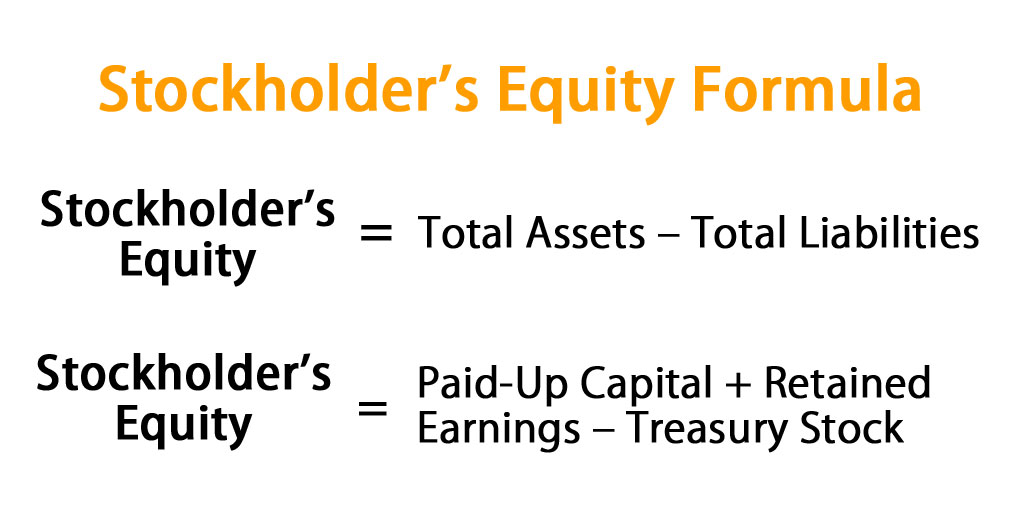
Owner’s or stockholders’ equity also reports the amounts invested into the company by the owners plus the cumulative net income of the company that has not been withdrawn or distributed to the owners. To make the Accounting Equation topic even easier to understand, we created a collection of premium materials called AccountingCoach PRO. Our PRO users get lifetime access to our accounting equation visual tutorial, cheat sheet, flashcards, quick test, and more. When an investment is publicly traded, the market value of equity is readily available by looking at the company’s share price and its market capitalization. For private entities, the market mechanism does not exist, so other valuation forms must be done to estimate value. On 12 January, Sam Enterprises pays $10,000 cash to its accounts payable.
- When a company has negative owner’s equity and the owner takes draws from the company, those draws may be taxable as capital gains on the owner’s tax return.
- It concludes with a closing balance, which must match the owner’s equity figure on your balance sheet for the same period.
- Therefore, owners may own only a portion of the value of assets — the company’s equity.
- He is a CFA charterholder as well as holding FINRA Series 7, 55 & 63 licenses.
Owner’s Equity Examples

A firm typically can raise capital by issuing debt (in the form of a loan or via bonds) or equity (by selling stock). Investors usually seek out equity investments as it provides a greater opportunity to share in the profits and growth of a firm. The expanded accounting equation is a form of the basic accounting equation that how to calculate credit and debit balances in a general ledger includes the distinct components of owner’s equity, such as dividends, shareholder capital, revenue, and expenses. The expanded equation is used to compare a company’s assets with greater granularity than provided by the basic equation. Contributed capital and dividends show the effect of transactions with the stockholders.
What Is a Liability in the Accounting Equation?
Typically, investors view companies with negative shareholder equity as risky or unsafe investments. Shareholder equity alone is not a definitive indicator of a company’s financial health; used in conjunction with other tools and metrics, the investor can accurately analyze the health of an organization. Assets represent the valuable resources controlled by a company, while liabilities represent its obligations. Both liabilities and shareholders’ equity represent how the assets of a company are financed.
Manage working capital effectively
Owner’s equity is normally a credit balance on the balance sheet which basically suggests that the total assets exceed the total liabilities of a business. If we add up all assets in a business and subtract any amount borrowed from creditors, we are left with the owner’s equity. In theory, this is the amount that the business owners can take home if a business is shut down immediately and all of its liabilities are paid in full. If a sole proprietorship’s accounting records indicate assets of $100,000 and liabilities of $70,000, the amount of owner’s equity is $30,000.
A final type of private equity is a Private Investment in a Public Company (PIPE). A PIPE is a private investment firm’s, a mutual fund’s, or another qualified investors’ purchase of stock in a company at a discount to the current market value (CMV) per share to raise capital. A property dividend occurs when the firm pays out dividends in the form of something other than stock or cash, often one of their assets or something they hold in inventory. For example, Walt Disney Company may choose to distribute tickets to visit its theme parks. A property dividend may be declared when a company wants to reward its investors but doesn’t have the cash to distribute, or if it needs to hold on to its existing cash for other investments.
The difference of $500 in the cash discount would be added to the owner’s equity. The double-entry practice ensures that the accounting equation always remains balanced, meaning that the left-side value of the equation will always match the right-side value. Think of retained earnings as savings, since it represents the total profits that have been saved and put aside (or “retained”) for future use. Any business owner who is serious about growing their business needs to understand equity.
Many view stockholders’ equity as representing a company’s net assets—its net value, so to speak, would be the amount shareholders would receive if the company liquidated all of its assets and repaid all of its debts. Substituting for the appropriate terms of the expanded accounting equation, these figures add up to the total declared assets for Apple, Inc., which are worth $329,840 million U.S. dollars. If a business buys raw materials and pays in cash, it will result in an increase in the company’s inventory (an asset) while reducing cash capital (another asset). Because there are two or more accounts affected by every transaction carried out by a company, the accounting system is referred to as double-entry accounting. This number is the sum of total earnings that were not paid to shareholders as dividends. This straightforward relationship between assets, liabilities, and equity is considered to be the foundation of the double-entry accounting system.
Owner’s equity is increased by each partner’s capital contributions (their investment in the partnership) and profit shares, and decreased by partner withdrawals and the partnership’s collective debts. Owner’s equity is calculated by adding up all of the business assets and deducting all of its liabilities. Bench simplifies your small business accounting by combining intuitive software that automates the busywork with real, professional human support. A positive number indicates that your company has more assets than debts, while a negative number suggests more debts than assets.


